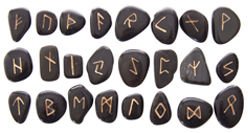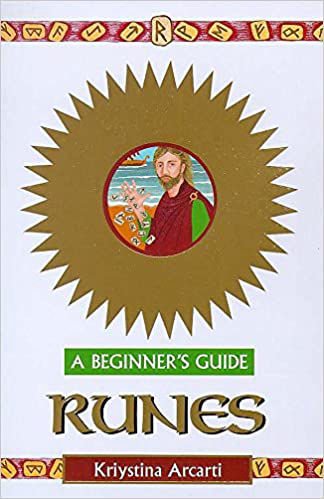
There are many substances you can choose to make your own runes. If you want to make them out of pebbles, try to ensure that the pebbles are similar in size, and be very careful to copy the symbols exactly if endeavouring to paint them yourself. Also make sure that you use a paint which will not flake or fade, preferably made from a natural pigment. It is said that the Vikings often used blood to stain their runes; I wouldn't recommend this, but I would suggest that a red pigment is used, red having a strong association with the god Thor. Those who wish to use the colour associated with Odin should use blue. Traditionally it is suggested that the pebbles used should be gathered from the seashore during a storm, so bear this in mind should you live near or be visiting the seaside!


